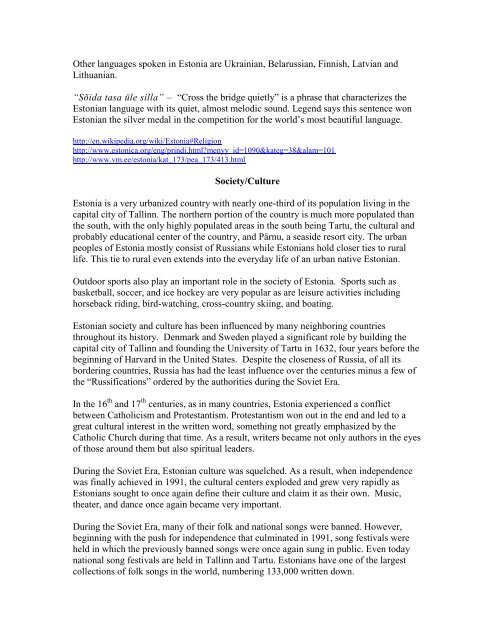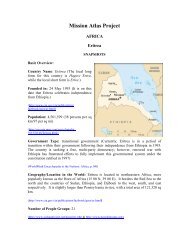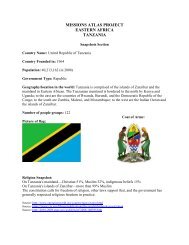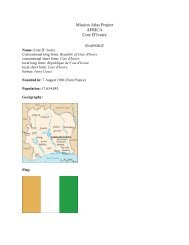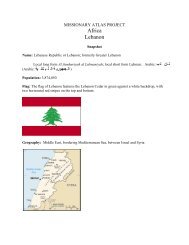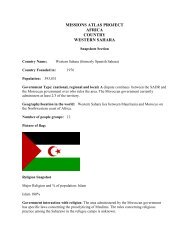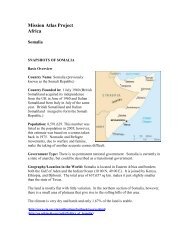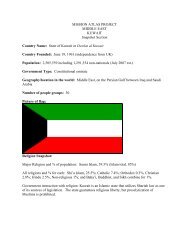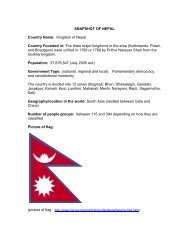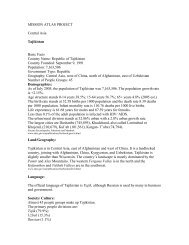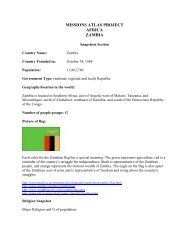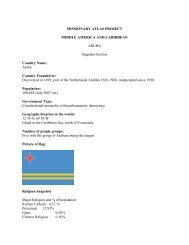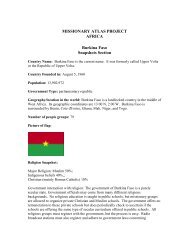Estonia Profile.pdf - WorldMap
Estonia Profile.pdf - WorldMap
Estonia Profile.pdf - WorldMap
Create successful ePaper yourself
Turn your PDF publications into a flip-book with our unique Google optimized e-Paper software.
Other languages spoken in <strong>Estonia</strong> are Ukrainian, Belarussian, Finnish, Latvian andLithuanian.“Sõida tasa üle silla” – “Cross the bridge quietly” is a phrase that characterizes the<strong>Estonia</strong>n language with its quiet, almost melodic sound. Legend says this sentence won<strong>Estonia</strong>n the silver medal in the competition for the world’s most beautiful language.http://en.wikipedia.org/wiki/<strong>Estonia</strong>#Religionhttp://www.estonica.org/eng/prindi.html?menyy_id=1090&kateg=38&alam=101http://www.vm.ee/estonia/kat_173/pea_173/413.htmlSociety/Culture<strong>Estonia</strong> is a very urbanized country with nearly one-third of its population living in thecapital city of Tallinn. The northern portion of the country is much more populated thanthe south, with the only highly populated areas in the south being Tartu, the cultural andprobably educational center of the country, and Pärnu, a seaside resort city. The urbanpeoples of <strong>Estonia</strong> mostly consist of Russians while <strong>Estonia</strong>ns hold closer ties to rurallife. This tie to rural even extends into the everyday life of an urban native <strong>Estonia</strong>n.Outdoor sports also play an important role in the society of <strong>Estonia</strong>. Sports such asbasketball, soccer, and ice hockey are very popular as are leisure activities includinghorseback riding, bird-watching, cross-country skiing, and boating.<strong>Estonia</strong>n society and culture has been influenced by many neighboring countriesthroughout its history. Denmark and Sweden played a significant role by building thecapital city of Tallinn and founding the University of Tartu in 1632, four years before thebeginning of Harvard in the United States. Despite the closeness of Russia, of all itsbordering countries, Russia has had the least influence over the centuries minus a few ofthe “Russifications” ordered by the authorities during the Soviet Era.In the 16 th and 17 th centuries, as in many countries, <strong>Estonia</strong> experienced a conflictbetween Catholicism and Protestantism. Protestantism won out in the end and led to agreat cultural interest in the written word, something not greatly emphasized by theCatholic Church during that time. As a result, writers became not only authors in the eyesof those around them but also spiritual leaders.During the Soviet Era, <strong>Estonia</strong>n culture was squelched. As a result, when independencewas finally achieved in 1991, the cultural centers exploded and grew very rapidly as<strong>Estonia</strong>ns sought to once again define their culture and claim it as their own. Music,theater, and dance once again became very important.During the Soviet Era, many of their folk and national songs were banned. However,beginning with the push for independence that culminated in 1991, song festivals wereheld in which the previously banned songs were once again sung in public. Even todaynational song festivals are held in Tallinn and Tartu. <strong>Estonia</strong>ns have one of the largestcollections of folk songs in the world, numbering 133,000 written down.


